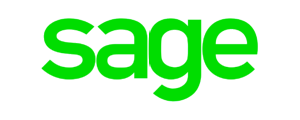The UK’s education sector is continually changing. Regulations, standards and methods as well as organisational structures, all evolve and shift. Keeping up to date with the latest developments is essential for educators, teachers and all those working in education.
At the latest count, the UK has 32,113 schools with almost 10.3 million full and part-time pupils, and 506,400 full-time teachers. There are 381 further education sixth forms and colleges as well as 162 higher education universities catering for 2.32 million students.
With the sector set for growth in the coming years, preparing for future updates and remaining agile in terms of implementing transformational reforms is essential for those in the education industry.
Here are five trends in education to watch in 2019 and beyond.
Pupils are on the rise, teachers on the fall

The number of pupils is forecast to surge in the next few years. There was a high birth rate from 2002 until 2008, and these children are now moving through the education system. There are other factors, including an increased return of home-schooled children with a 60% rise in the numbers coming back to mainstream education in 2017 compared to 2011-12.
Government figures predict 654,000 (8.7%) more pupils by 2026, with an additional 534,000 pupils in secondary schools and an increase of approximately 100,000 in primary education.
One report has indicated that an additional 14,500 secondary school classrooms will be required by 2020. And London will need an estimated 73 new secondary schools by 2020 to accommodate the increase of pupils.
This rise in pupil numbers will put intense pressure on secondary schools and those working in education will need to plan for extensions or the construction of new buildings to house students.
There have been calls for the Government to develop a National School Building Strategy to address this issue specifically.
Those responsible for finances in the education industry will also need to forecast for this dramatic upsurge in pupils to ensure that budgets factor in the escalating costs.
In direct conflict with the rise of pupils is the reported fall in the number of teachers. Research by the National Audit Office (NAO) found that almost 35,000 qualified teachers left the profession in 2016 for reasons other than retirement.
Head teachers are finding it hard to fill vacancies with quality candidates, in particular in core subjects including maths, science and languages. A report from National Association of Head Teachers (NAHT) indicates that 30% of new teachers leave the profession after five years and that in 2016 school leaders struggled or failed to recruit for eight out of 10 job roles.
A dedicated effort on recruiting and retaining teaching staff is a key priority in the education sector.
School reforms and new organisational structures
In response to the rising numbers of pupils in the UK, it’s expected that the Government will take a progressive approach to increasing schools and classroom numbers to ensure there are places available for all children.
This will likely see an increase in schools becoming academies as well as encompass the opening of numerous free schools. Last year, 19 local authorities invited applications from organisations such as multi-academy trusts, groups of parents and teachers, businesses, universities, religious groups and charities to set up and run 19 new free schools.
These non-profit, state-funded independent schools will create more than 1,600 new school places for children.
One of the more recent trends in education is the emergence of ‘all-through’ education establishments run by multi-academy trusts. Children stay with the same provider from the moment they enter nursery as a baby through to when they leave as an 18-year-old adult.
This shift will see the traditional transitions from one stage of education to next eliminated, for example moving from a primary to a secondary school and could potentially impact a child’s ability to adapt to different environments.
It will also pose challenges for educators in terms of planning the student journey, ensuring staff are trained with the skills required and devising innovative procedures for the smooth running of a new organisational structure.
A focus on technical learning

Within the education industry there is a renewed focus on technical learning, in line with the government’s new Industrial Strategy. This long-term plan to ‘boost the productivity and earning power of people throughout the UK’ includes an emphasis on education. In particular strengthening vocational education, as a viable and valuable alternative to the existing academic provision.
New T Levels for 16-to-19-year-olds will be taught from 2020. These modern vocational qualifications will offer an alternative to A Levels and replace a large number of existing courses. These are the “biggest overhaul of post-school education in 70 years,” according to a government spokesperson.
The lesson programmes and assessments have been developed with leading companies including Rolls Royce, EDF and Lloyds Bank. The first T Level courses confirmed are Digital, Construction, and Education and Childcare.
There are also various initiatives to encourage more female students into science, technology, engineering and mathematics (STEM) subjects. Those working in education will be expected to help nurture and encourage young women in these areas to address the current gender gap in the uptake of STEM courses.
This attention on technical learning is also seen at university level with the introduction and rising popularity of degree apprenticeships, rather than the traditional higher education courses.
Degree apprenticeships tailor learning to specific business needs and enable students to earn a full-time wage as they study at university part-time. Students leave with a full Bachelors or Masters degree and improve their chances of full-time employment on completion.
New technology to improve student experience
Incorporating technology into our everyday lives is the norm, and it’s the same in the education sector.
The latest digital tools, hardware and software in schools, academies, colleges and universities are no longer a luxury.
There are an estimated 3.9 million computers in UK classrooms and educators are adopting e-assessments, data-driven comprehension analytics as well as game and video-based learning.
The latest tech trends in education include utilising cloud-based technology that stores information and lessons in one central place that can be accessed by students from anywhere – no matter their proximity to their tutor
And with more than 58% of UK households owning a tablet and 85% of adults using a mobile phone, mobile-based education is forecast to grow rapidly. Using these devices is ingrained in the younger generation’s lives and maximising this familiarity for education purposes is a natural and practical progression.
Higher education institutions are creating, testing and implementing a number of new digital tools to improve student retention, satisfaction and success.
These include:
- better enrolment systems to more effectively match students with the best courses to prevent them taking an irrelevant course, becoming disengaged and dropping out
- using Artificial Intelligence to analyse data and help students on a more personalised level with workload, logistics, fresher week onboarding and prompting relevant actions
- creating effective automation for repetitive tasks and administration for both staff and students, to enable more time for teaching and studying
- self-service mobile apps and student portals to reduce the time spent on registration, completing forms and updating personal information
The unknown outcome of Brexit

The education industry is busy predicting changes and getting ready for the potential consequences of Brexit as proactively as possible. But, as yet, the impact is unknown.
However, there has already been some fallout following the vote to leave the European Union.
Schools, colleges, academies and universities are identifying and assessing EU nationals on their workforce. These staff could need expensive or complicated visas in the future, or positions might need to be filled if staff decide to leave or are no longer permitted to stay.
There are thousands of EU nationals who work as teachers. In 2015 approximately 5,000 teachers from EU countries qualified to teach in the UK. With an existing shortage of qualified teachers, the potential exodus of thousands of teachers due to Brexit is a worrying thought.
Applications from EU students to private schools and higher education dropped off immediately after the referendum, due to the uncertainty. And the impact on research funding for higher education institutions also remains unclear, with universities considering opening offshore campuses.
EU students are also more vulnerable to bullying and racist attacks. Hate crimes and incidents during the three months surrounding the vote in June 2016 increased by 54% in schools. Educators will need to monitor and devise processes to safeguard the children most as risk and tackle this issue.
Stay ahead of the curve
The education sector in the UK is experiencing a period of substantial transformation and uncertainty.
Reforms, leaving the European Union, new technology and the booming pupil population will all significantly shape the industry in the coming years. By keeping track of the latest trends and developments, those working in education can stay ahead of the curve to anticipate and prepare for change.
This level of awareness and flexibility will help to minimalise disruption and enable educators to continue to provide a high level of education for their pupils.












